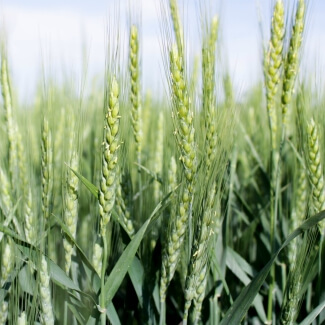Disease Control in Winter Wheat
Jan 13, 2020

Each year, the average wheat crop in Kansas, encounters a plethora of pests en route to reaching its full, potential yield. Many of these threats are easily identified and familiar to us, while others are variable and, thus less predictable. Among the more challenging pests are a host of microscopic organisms classified as fungus or bacteria and can be found both above and below ground, in one form or another.
As you might expect this subject encompasses much more information than can be covered in this article. For that reason, agronomists and seedsmen at the Great Bend Coop are available to help you anticipate these issues and formulate a plan. A brief synopsis follows.
Our challenge, as producers and agronomists, is to:
Many crop varieties and hybrids have been selected due to their ability to withstand some pests and often that is the most effective means of avoiding substantial losses. The Great Bend Coop seed department and your Great Bend Coop agronomist can help in identifying this inherent means of defense and selecting the right seed to plant.
Following a timeline of crop development, we can:
Some useful guides are also available from Kansas State University Research and Extension: A few examples are listed below:
Seed treatments:
MF2955 Seed Treatment Fungicides for Wheat Disease ...
https://www.bookstore.ksre.ksu.edu/pubs/MF2955.pdf
Identification:
Publication MF2994-Wheat Disease Identification- is a good guide available from Kansas State University for a small cost or can be downloaded from the webpage, https://www.bookstore.ksre.ksu.edu/Item.aspx?catId=299&pubId=13639Evaluation:
Diseases affecting heads and grain:

As you might expect this subject encompasses much more information than can be covered in this article. For that reason, agronomists and seedsmen at the Great Bend Coop are available to help you anticipate these issues and formulate a plan. A brief synopsis follows.
Our challenge, as producers and agronomists, is to:
- properly identify the pest,
- estimate the possible economic impact on the crop yield, and
- evaluate effective, economical means of control or avoidance, and do this as far in advance of the problem as possible.
Many crop varieties and hybrids have been selected due to their ability to withstand some pests and often that is the most effective means of avoiding substantial losses. The Great Bend Coop seed department and your Great Bend Coop agronomist can help in identifying this inherent means of defense and selecting the right seed to plant.
Following a timeline of crop development, we can:
- Use an effective seed treatment to protect the seed/seedling in its early stage of development.
- Understand likely pathogens and the stage of growth when the crop is most susceptible to injury.
- Scout the crop on a regular basis for signs the pest is present.
- Consider foliar fungicides when warranted. The Great Bend Coop agronomists can assist in selection and cost, including the best means of application (aerial or ground).
- Scout for pathogens in the area that can infect the head during flowering.
Some useful guides are also available from Kansas State University Research and Extension: A few examples are listed below:
Seed treatments:
MF2955 Seed Treatment Fungicides for Wheat Disease ...
https://www.bookstore.ksre.ksu.edu/pubs/MF2955.pdf
Identification:
Publication MF2994-Wheat Disease Identification- is a good guide available from Kansas State University for a small cost or can be downloaded from the webpage, https://www.bookstore.ksre.ksu.edu/Item.aspx?catId=299&pubId=13639
Evaluation:
Evaluating the Need for Wheat Foliar Fungicide. Help can be found in the publication MF3057... https://www.bookstore.ksre.ksu.edu/pubs/MF3057.pdf
Diseases affecting heads and grain:
https://www.bookstore.ksre.ksu.edu/Item.aspx?catId=299&pubId=14980
